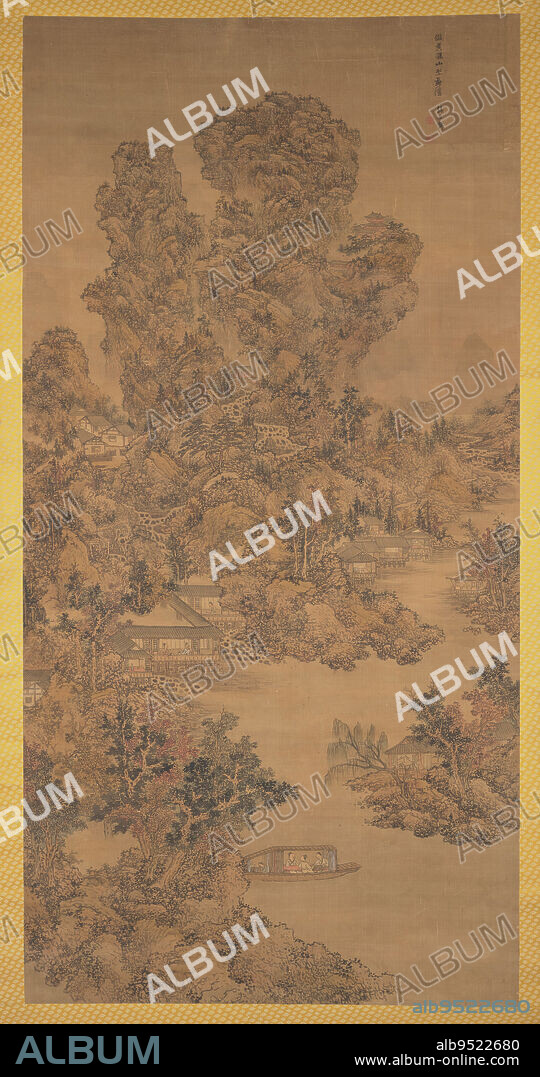alb9522680
Chinese Landscape after Huang Gongwang, 18th-19th century, Shi Wenjing; Inscriber: Inscription on box by Gejo Keikoku, Chinese, 77 5/8 × 38 15/16 in. (197.17 × 98.9 cm) (image)95 1/2 × 46 7/8 in. (242.57 × 119.06 cm) (overall), Ink and colors on silk; hanging scroll, China, 18th-19th century, This monumental painting displays eremitic elements that were heavily influential in Chinese landscape painting. Eremitism, or the retreat from society into a life of reclusion, was a popular idea throughout Chinese history that valued solitude, withdrawal into nature, and self-cultivation. This scene depicts tiny houses and their residents tucked away in the lap of a mountain. The huge, rocky mountain seems difficult and cumbersome to climb, and the river at its base seals the residents in, creating a reclusive dwelling away from a more populated society.

|
Añadir a otro lightbox |
|
Añadir a otro lightbox |



¿Ya tienes cuenta? Iniciar sesión
¿No tienes cuenta? Regístrate
Compra esta imagen.
Selecciona el uso:

Descripción:
Ver traducción automática
Chinese Landscape after Huang Gongwang, 18th-19th century, Shi Wenjing; Inscriber: Inscription on box by Gejo Keikoku, Chinese, 77 5/8 × 38 15/16 in. (197.17 × 98.9 cm) (image)95 1/2 × 46 7/8 in. (242.57 × 119.06 cm) (overall), Ink and colors on silk; hanging scroll, China, 18th-19th century, This monumental painting displays eremitic elements that were heavily influential in Chinese landscape painting. Eremitism, or the retreat from society into a life of reclusion, was a popular idea throughout Chinese history that valued solitude, withdrawal into nature, and self-cultivation. This scene depicts tiny houses and their residents tucked away in the lap of a mountain. The huge, rocky mountain seems difficult and cumbersome to climb, and the river at its base seals the residents in, creating a reclusive dwelling away from a more populated society.
Crédito:
Album / quintlox
Autorizaciones:
Modelo: No - Propiedad: No
¿Preguntas relacionadas con los derechos?
¿Preguntas relacionadas con los derechos?
Tamaño imagen:
4258 x 8077 px | 98.4 MB
Tamaño impresión:
36.1 x 68.4 cm | 14.2 x 26.9 in (300 dpi)
Palabras clave:
CAJA • CHINA • CHINO • COLORES • ENORME • ESCALADA • FLUVIAL • GENERAL • IMAGEN • INSCRIPCION • MONTAÑA • MONTAÑAS • MONTE • NATURALEZA • PAISAJE CHINO • PERGAMINO COLGANTE • RETIRADA • RIO • RIVER • SEDA • SOCIEDAD • TINTA CHINA • TINTA • VIDA
 Pinterest
Pinterest Twitter
Twitter Facebook
Facebook Copiar enlace
Copiar enlace Email
Email
